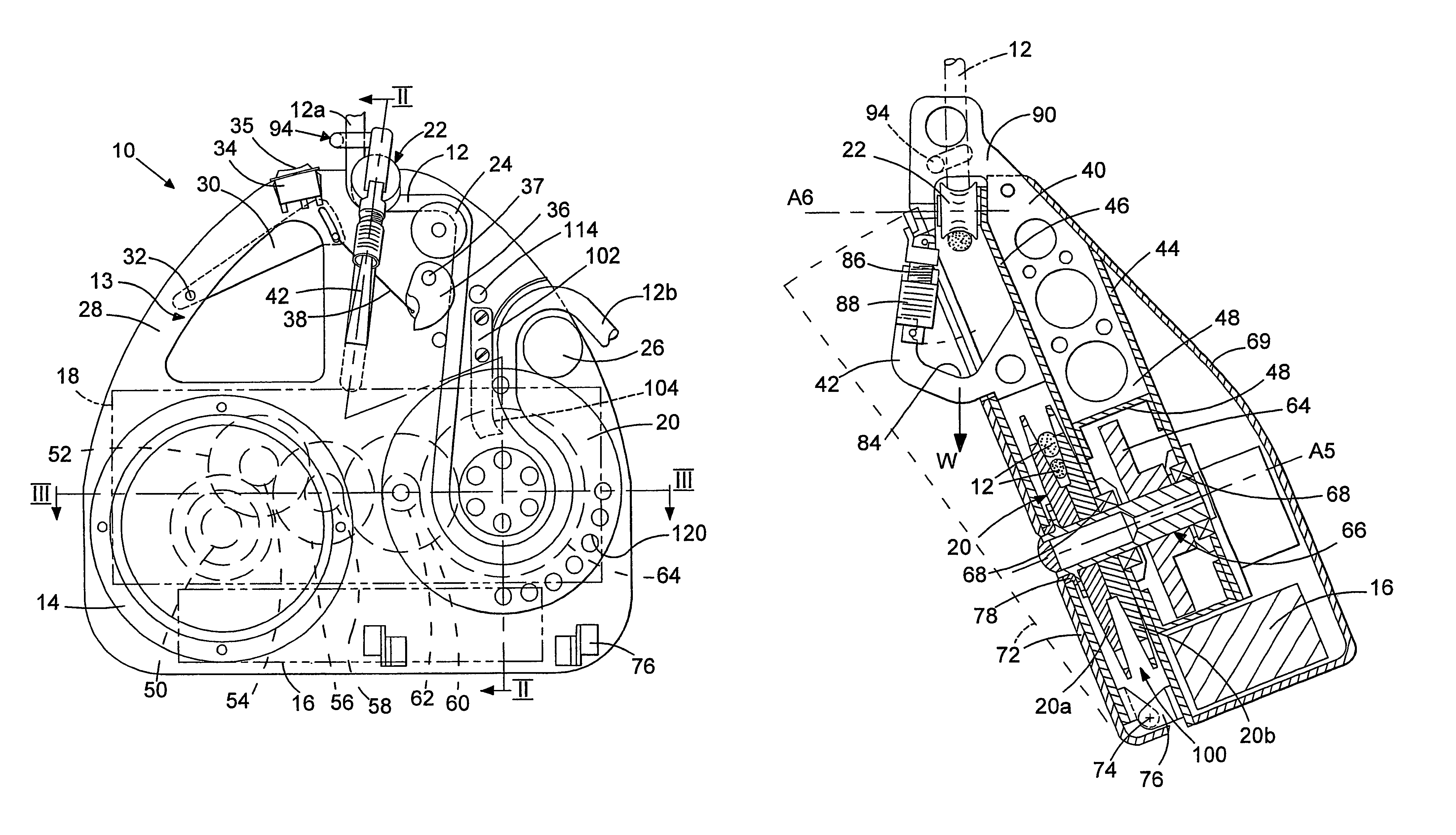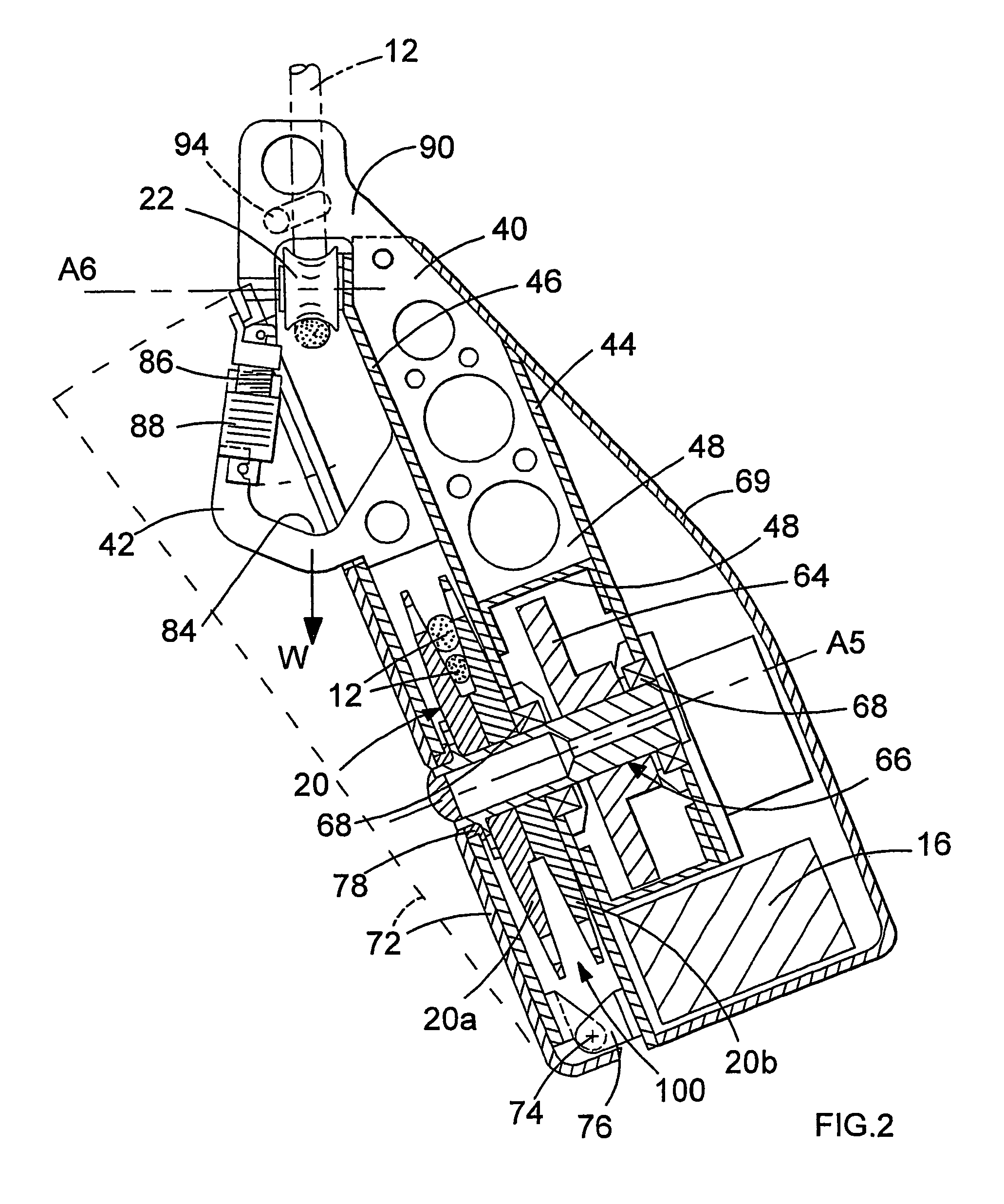Powered rope climbing apparatus
a technology of rope climbing and rope breaking, which is applied in the field of powered rope climbing apparatus, can solve the problems of limiting the operation ability of rope climbing, limiting the service life of rope climbing, so as to reduce the relative displacement of the apparatus, increase the frictional resistance, and enhance the frictional engagement of the rope breaking effect.
- Summary
- Abstract
- Description
- Claims
- Application Information
AI Technical Summary
Benefits of technology
Problems solved by technology
Method used
Image
Examples
first embodiment
[0099]Referring now to FIG. 4, the pulley 24 of the embodiment shown in FIG. 1 has now been omitted so that he rope 12 extends directly between the guide wheel 22 mounted on the karimber 42 and the main pulley wheel 20. Since the entry path of rope 12 into the pulley wheel 20 has now been modified, the position of the output pulley wheel 26 has been adjusted so as to ensure that the rope 12, as it exits the main pulley 20, is as close to the rope 12 as it enters this pulley wheel 20 as clearly shown in FIG. 4 and the importance of which was described with reference to the This has also necessitated modification of the design and orientation of the rope extractor 102 and its associated cam surface 104. The modification in the path of the rope 12 within the device 10 has also necessitated a change in position of the ascender cam 36, although this cam 36 is again directly connected to the trigger switch 30 by use of an appropriate wire mechanism. However, in this embodiment, the ascen...
embodiment 10
[0102]A further variation of the embodiment 10 shown in FIG. 4 is the modification to the karimber design, as best seen in FIG. 5, wherein an additional attachment mechanism is provided on top of the harness attachment member 42. This is provided by means of an extender plate 133 integrally formed with and extending vertically upwards (when viewed in FIG. 5) from the harness attachment member 42. This plate 133 is provided with a transversely extending hole 135 through which the rope 12 may be fed so as to provide a double pull loop arrangement of the rope as is conventional for winches. In this manner, and as illustrated in FIG. 4, prior to the rope 12 entering the device 10 as rope 12a, a first loop of the rope 12c is fed through the aperture 135 and extends vertically away from the device 10 around a remote pulley wheel before entering the climbing device 10 at position 12a in the manner described with reference to FIGS. 1-3. The rope 12c may extend to an anchor point remote the ...
PUM
 Login to View More
Login to View More Abstract
Description
Claims
Application Information
 Login to View More
Login to View More - R&D
- Intellectual Property
- Life Sciences
- Materials
- Tech Scout
- Unparalleled Data Quality
- Higher Quality Content
- 60% Fewer Hallucinations
Browse by: Latest US Patents, China's latest patents, Technical Efficacy Thesaurus, Application Domain, Technology Topic, Popular Technical Reports.
© 2025 PatSnap. All rights reserved.Legal|Privacy policy|Modern Slavery Act Transparency Statement|Sitemap|About US| Contact US: help@patsnap.com



